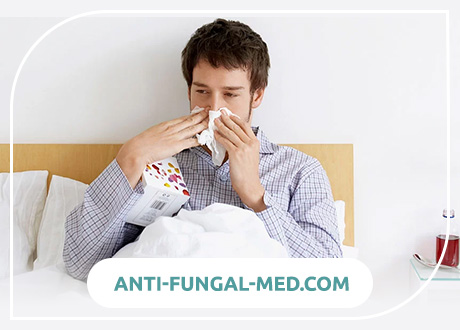What is Cold?
Experts familiar to us in everyday life cold are called acute respiratory viral infection (ARVI), or acute respiratory disease (ARI). The cause of the common cold are viruses.
The most common viruses provocateurs for colds are transmitted by airborne droplets, as well as through contaminated hands or various household items, such as stationery, door handles, towels, elevator buttons and much more. Viruses are able to live on objects from 72 hours to months, constantly increasing their habitat halo.
Causes of a Cold
Viruses
Cold Symptoms
During a cold, the symptoms of the disease are not as acute as with the flu, the main pain and inflammation occur in the nasopharynx. Cold symptoms begin with pain in the nose, runny nose, redness and sore throat, a slight increase in temperature. Cold symptoms last 5-7 days, although the cough can last up to two weeks.
Copious runny nose with green or yellow secretions indicates the fight of the immune system against the pathogen, and is a normal protective reaction of the body against the virus.
If the nasopharynx is significantly affected by the virus, cold symptoms can be accompanied by tearing and, as a result, swelling of the eyes.
Diagnosis of the Common Cold
Diagnosis of a cold doctor conducts when viewed.
If you have a strong cough, wheezing, chest pain and sputum mixed with pus or blood, as well as shortness of breath, pneumonia or acute bronchitis should be suspected. In this case, you should immediately contact your doctor, who will appoint a chest X-ray.
In case of severe pain in the throat, a full-time examination of a specialist is also necessary, especially if it is accompanied by an increase in body temperature, enlarged tonsils, difficulty in swallowing.
Cold Treatment
They treat colds with antiviral drugs (for example, Amiksin), and for severe symptoms, they can also use drugs to suppress their manifestations locally, for example, Nazol – for colds, Ibuprofen, Paracetamol – to reduce the temperature and combat the sensation of aching joints.
Effective in the treatment of colds are also rinsing the throat and nasopharynx with saline, a solution of baking soda, infusion of chamomile or calendula, drinking plenty of warm drinks (tea with lemon, chamomile, fruit juice from raspberry jam, etc.).
When eliminating pain from temperature, it is worth remembering that at a young age, the use of Acetylsalicylic acid is prohibited, since it can provoke Reye’s syndrome, only a medical specialist can decide on the use of this drug.
It is scientifically justified to take vitamin C and zinc during the treatment of colds. However, you should be careful with these drugs, since they have a number of contraindications, you should not take them without first consulting a doctor.
People with other chronic diseases of the respiratory system (for example, asthma) should consult a doctor at the first symptoms of a cold, as they have a more severe cold and flu and are more at risk for life.
A common mistake in the treatment of colds is an independent decision to take antibiotics, it is worth remembering that colds are provoked by viruses and antibiotics are useless in their treatment, since they cope only with bacterial infections. Taking antibiotics can weaken your immune system and will only aggravate the course of the disease and increase the recovery period. And for people with gastrointestinal diseases, self-administration of antibiotics can provoke serious complications (diarrhea, indigestion). Another factor that speaks not in favor of self-medication is the gradual development of antibiotic resistance, which will make their use less effective at the moment when they really will be relevant.
Cold Prevention
Prevention consists in observing the following safety and hygiene measures:
- frequent washing of hands with soap, especially during epidemics of the disease, before eating, before cooking, upon arrival home from a public place;
- do not touch the eyes, nose and mouth with your hands, since infection most often occurs through the mucous membranes;
- sneezing and coughing, cover your mouth;
- blow your nose into paper handkerchiefs and immediately throw them away;
- avoid close contact with sick colds;
- avoid public places;
- often use hand antiseptics;
- do not use other people’s cutlery.

